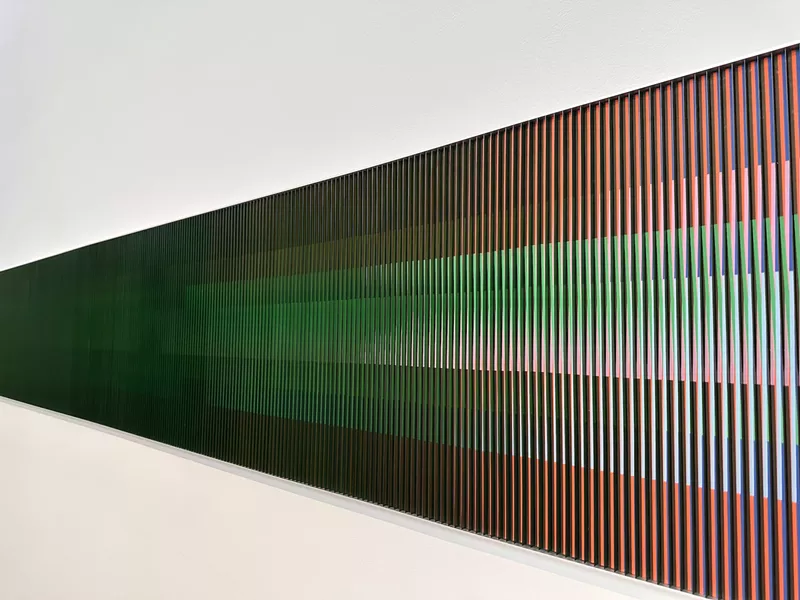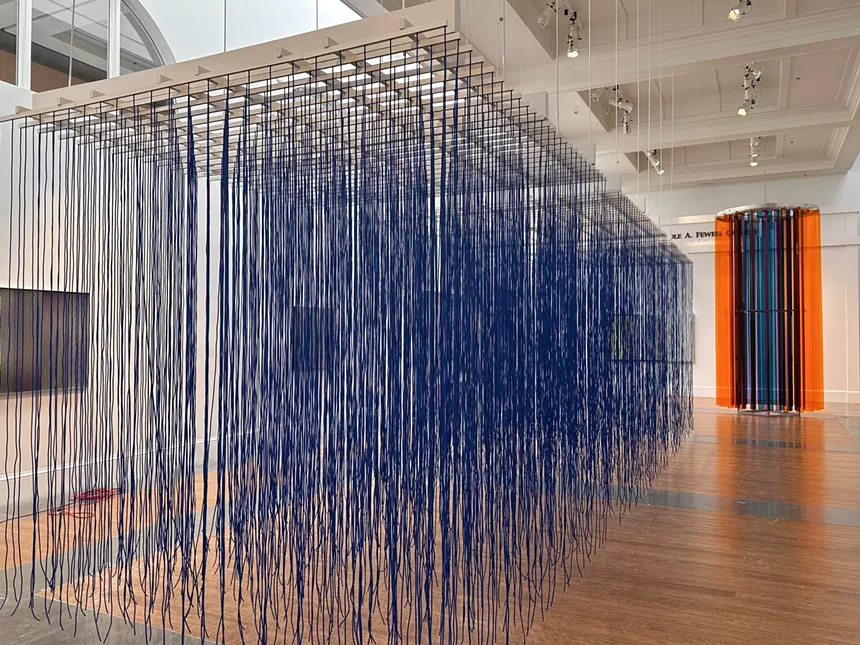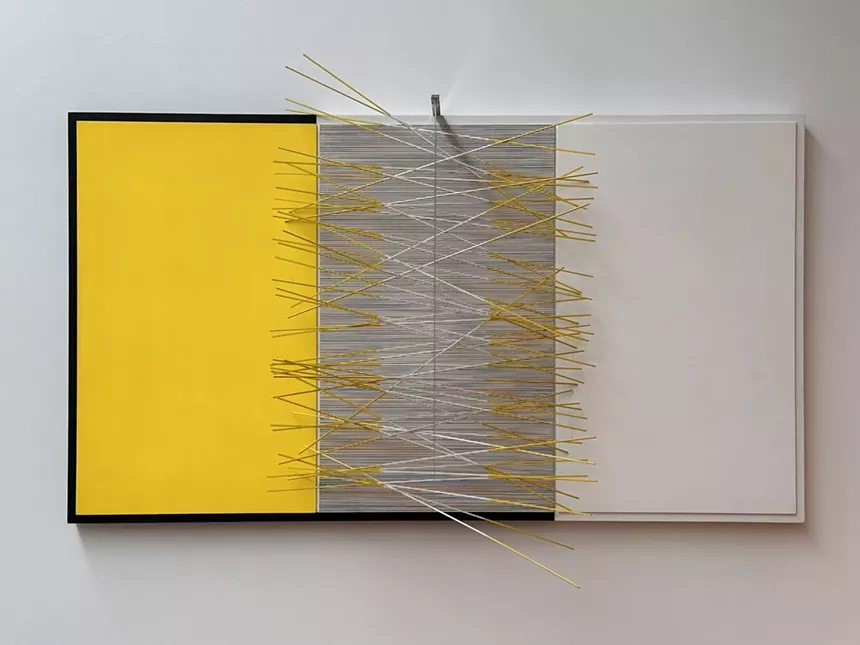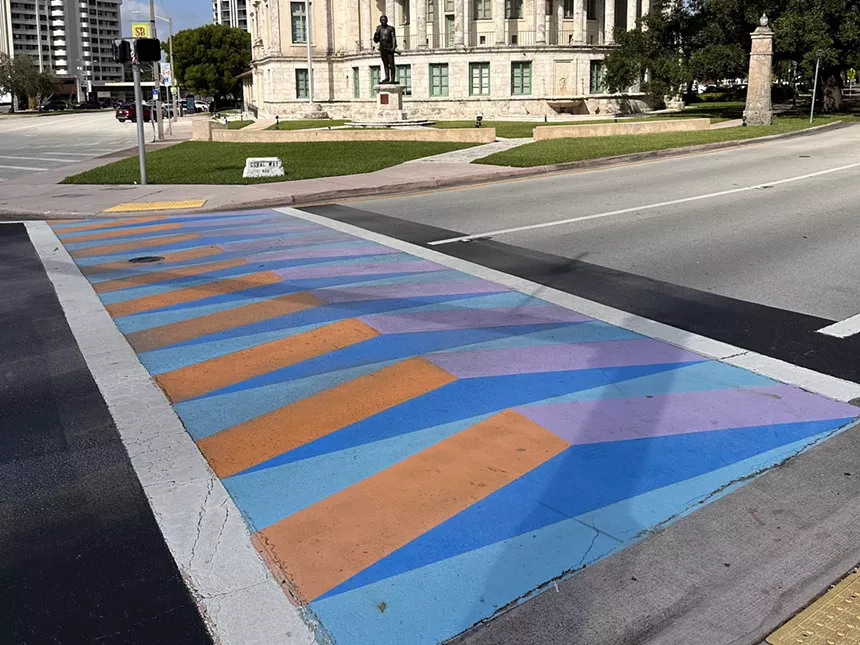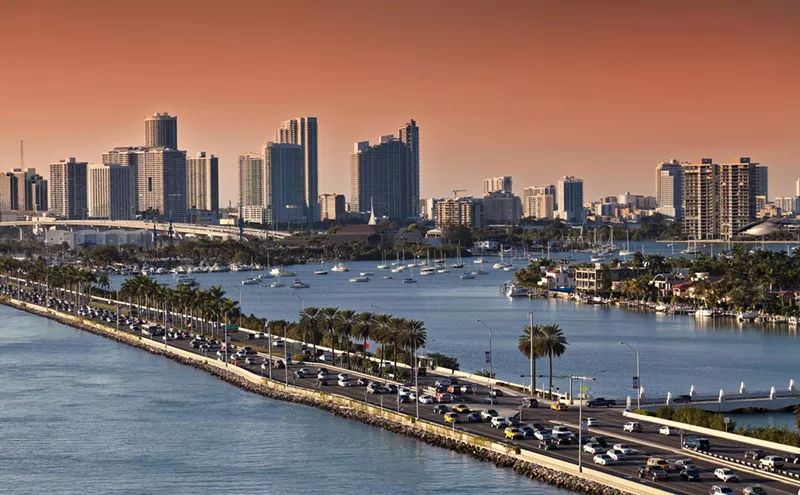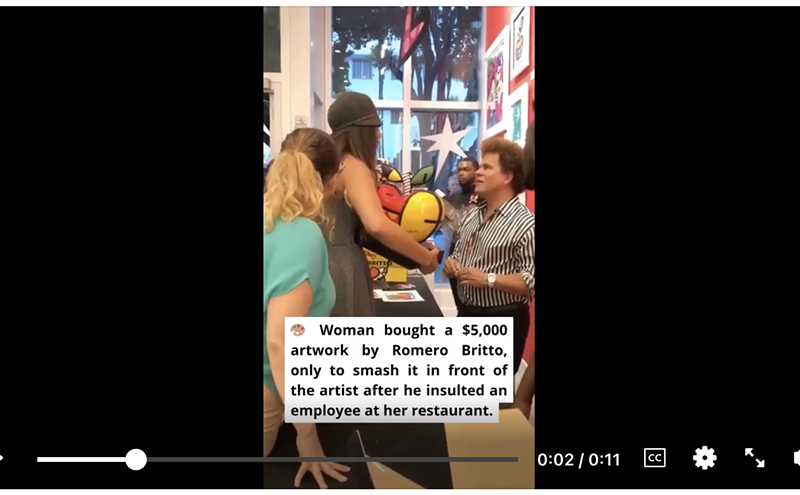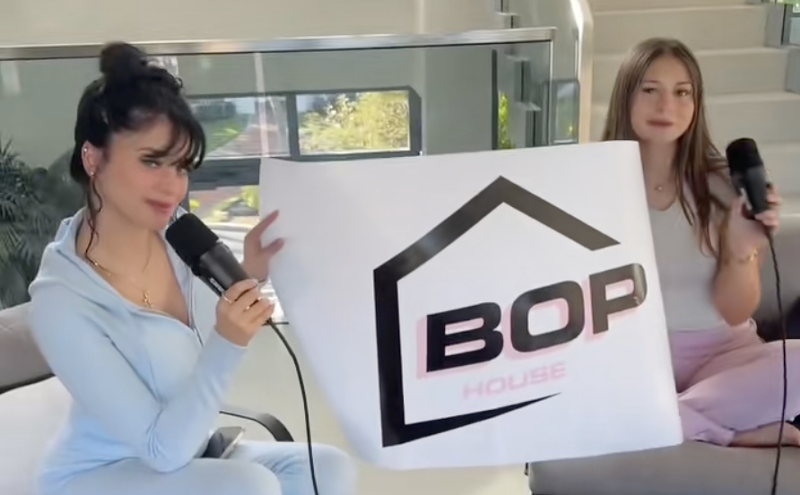They were both born in Venezuela in 1923. Each moved to Paris, where they lived and eventually died. Both explored color, light, movement, optical illusions, and interaction with the viewer. They developed monumental works into architecture and are internationally recognized as masters of kinetic art.
Two museums in Venezuela bear their names: the Jesús Soto Museum of Modern Art in Ciudad Bolívar and the Carlos Cruz-Diez Museum of Stamp and Design in Caracas.
On the 100th anniversary of the birth of Jesús Rafael Soto (June 5, 1923-January 14, 2005) and Carlos Cruz-Diez (August 17, 1923-July 27, 2019), the Coral Gables Museum organized the exhibition "Masters that Transformed the City" as a tribute to them.
"We decided to hold the exhibition because these artists have worked on art linked to the city and architecture, which aligns with the museum's focus," says curator Yuni Villalonga. The exhibition showcases the "most important stages and significant explorations" of these creators, adds Adriana Meneses, member of the board of directors of the Coral Gables Museum.
In the center of the exhibition hall is Penetrable azul de Valencia, created by Soto in 1999. The artwork is a semi-transparent blue volume formed by the repetition of flexible PVC tubes hanging vertically from a rectangular platform. Upon entering the installation, your body moves the blue fibers, generating optical vibrations. In this way, motion becomes visible.
Soto began developing this type of installation in the mid-1960s and created over 30 penetrables. He presented the first one in 1967 at the Denise René Gallery in Paris, accompanied by a performance by the dancer Sonia Sanoja, dressed in a mesh of vertical stripes that seemed to vibrate when viewed through the rods of the installation.
Soto's pieces create a poetic space between the viewer and the artwork. As the perception of vibration is triggered by movement, a subtle fragment of the atmosphere seems to transform before the eyes.
This optical experience occurs in all the artist's works selected for the exhibition. It is a vibration present in all stages of his work, whether from the '60s or the '90s, and through the materials used to construct them, ranging from nylon, wood, metal, and plaster to plexiglass.
In my case, I had the opportunity to interview Carlos Cruz-Diez in 1998 at his home in Caracas. It was an assignment for the Venezuelan newspaper El Nacional. "Every work of art should provoke astonishment," he told me.
Cruz-Diez explained that in his structures, "color is revealed through concealment. It goes from a monochrome situation — through many processes of perception, psychology of vision, light — to another monochrome situation. The fact that you can perceive that this color is there, that it appears and disappears, that you can look at it, provokes that principle (of astonishment)."
That's why, to fully appreciate his "physichromies" — pieces filled with stripes of colors — one needs to walk through them and discover how the hues change with each step. How they blend to show an ambiguous reality with colors that do not exist in the artwork but are only revealed through movement.
"My work is humanity itself. Color, line, represents a cell of humanity," I recall hearing him say. "I represent a cell that, when multiplied, is the essence of humanity."
Around Soto's blue penetrable, the other pieces by both artists are displayed, six of each in total, and an educational panel with documentary videos. Although the exhibition's name refers to the changes these masters brought to cities worldwide, the few references to the influence of their works are only found within the documentaries.
Villalonga, however, asserts that among the efforts made by the Coral Gables Museum for the exhibition was the restoration of the pedestrian crosswalks designed by Cruz-Diez for the City of Coral Gables, which were implemented in late 2017. "The experience will begin from the outside. It was something we wanted, to bring the exhibition a bit closer to the city," says Villalonga, emphasizing that Cruz-Diez was a scholar of color theories.
Located just a few blocks from the museum, on the streets of Le Jeune, Biltmore Way, Aragon, Salzedo, and Coral Way, the crosswalks are integrated artworks within the urban landscape, displaying the creator's chromatic scheme.
The curator adds that Soto and Cruz-Diez were artists observing the laws of nature and the universe. Villalonga also points out that among their fundamental contributions are the "perception of color and movement, volume, and viewer participation."
"It's a joyful exhibition, one that will leave you with a smile," says Meneses, "not only because of the color and energy that the pieces transmit but also because it allows you to enjoy and play. I believe that's what it will convey, and the audience will leave content, eager to come back."
– Ana Maria Carrano, ArtburstMiami.com
"Masters that Changed the City." On view through October 22, at the Coral Gables Museum, 285 Aragon Ave., Coral Gables; 305-603-8067; coralgablesmuseum.org. Tickets cost $5 to $12. Tuesday through Friday 11 a.m. to 5 p.m., Saturday 10 a.m. to 6 p.m., and Sunday 11 a.m. to 5 p.m.

Audio By Carbonatix
[
{
"name": "GPT - Billboard - Slot Inline - Content - Labeled - No Desktop",
"component": "22004575",
"insertPoint": "2",
"requiredCountToDisplay": "2"
},{
"name": "STN Player - Float - Mobile Only ",
"component": "22595215",
"insertPoint": "2",
"requiredCountToDisplay": "2"
},{
"name": "Editor Picks",
"component": "17482312",
"insertPoint": "4",
"requiredCountToDisplay": "1"
},{
"name": "Inline Links",
"component": "18711090",
"insertPoint": "8th",
"startingPoint": 8,
"requiredCountToDisplay": "7",
"maxInsertions": 25
},{
"name": "GPT - 2x Rectangles Desktop, Tower on Mobile - Labeled",
"component": "23181625",
"insertPoint": "8th",
"startingPoint": 8,
"requiredCountToDisplay": "7",
"maxInsertions": 25
},{
"name": "Inline Links",
"component": "18711090",
"insertPoint": "8th",
"startingPoint": 12,
"requiredCountToDisplay": "11",
"maxInsertions": 25
},{
"name": "GPT - Leaderboard to Tower - Slot Auto-select - Labeled",
"component": "17720761",
"insertPoint": "8th",
"startingPoint": 12,
"requiredCountToDisplay": "11",
"maxInsertions": 25
}
]

